This post is part of Fourth Annual Buster Keaton Blogathon hosted by Silent-ology.
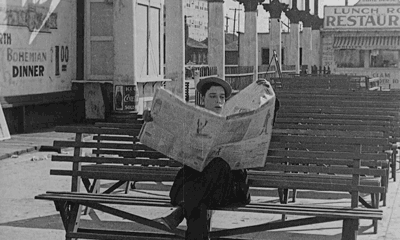
Nearly one hundred years ago, Grace Kingsley interviewed Buster Keaton twice for the Los Angeles Times. He turned up in her news and gossip columns quite often, but unlike Chaplin and Fairbanks (the two chattiest stars of the time) he sat down and answered her questions only early in his solo career. Alma Whittaker, Kingsley’s Times colleague, said in 1926 that he was afraid of interviews, and “it took Papa Keaton, Lew Cody, Roscoe Arbuckle and the trusty P.A. [press agent] to help me interview Buster.”* Fear might have been part of his reluctance, nevertheless doing publicity went with the job of being a star, and he wasn’t bad at it.
Kingsley first spoke to him just before his career took off in 1920, when he was publicizing The Saphead. The piece was called “Buster Busts Into Stardom.” Keaton was very funny about how acting in a drama was so different from comedy, because “the role of Bertie the Lamb does cramp Buster’s style something awful!” He told her all his work troubles:
“I gotta do some sad scenes. Why, I never tried to make anybody cry in my life! And I go ‘round all the time dolled up in kippie clothes – wear everything but a corset! Can’t stub my toe in this picture nor anything! Just imagine having to play-act all the time without ever getting hit with anything!”
“Don’t know why they chose me for the part, anyhow, only I’ve got a blank pan. Saw a nice fluffy pie on the set the other day that would’ve looked good on the hero’s face, but he got away just in time.”
“Fatty won’t speak to me in these clothes,” went on Buster, mournfully, “and neither will Luke, Fatty’s dog. I’m losing all my friends. And on top of all this, I gotta do some love scenes. And I never did make love before in my life. What? Oh, yes, of course, I mean before the camera. But, anyhow,” and Buster loosened the Arrow collar around his neck, “but anyhow, the camera can’t catch my blushes!”
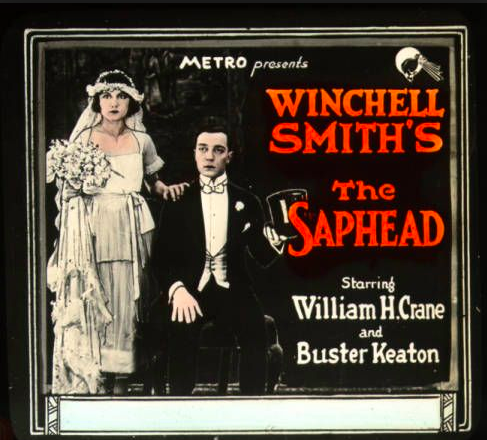
Despite his misgivings about his current project, life wasn’t all bad; as Kingsley pointed out “the agony won’t last much longer, because Buster has his own comedy company now, you know.” She asked him about his plans:
He says he’s following Fatty Arbuckle’s method, get a plot first, then build the picture, leaving all the plot out. He says it works fine. The first story is to be about a portable house and a young married couple, which certainly does sound like a jazzy combination for comedy.**
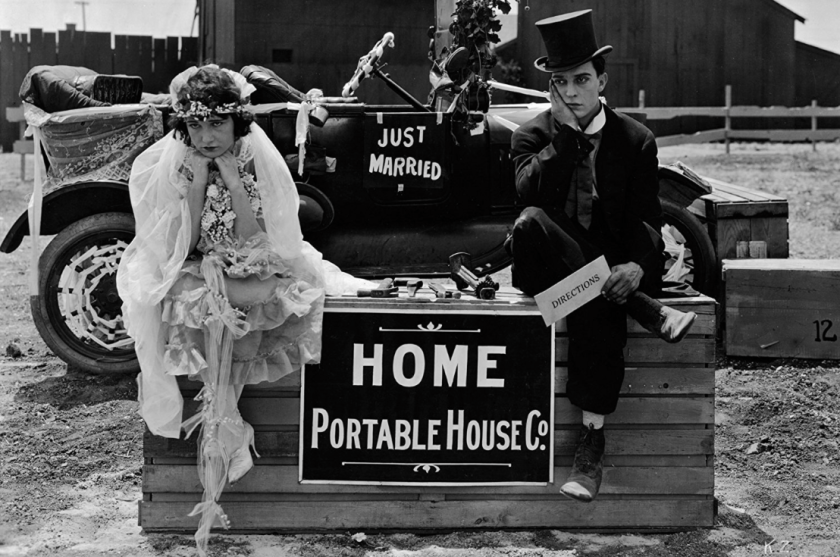
There’s no evidence that he was scared of talking to Kingsley, and Keaton did a fine job of saying things that made good copy–though I’m not convinced they were Keaton’s exact words, because he didn’t call Arbuckle ‘Fatty.’
Her second interview happened a little over a year later, when Kingsley visited Keaton and his new wife at home. It’s an unusual piece, because he rarely used his personal life in publicity — he’d rather talk about work.
She wrote a sweet description of the newlyweds:
“My goodness, where are the parents of these children?” That’s the first thing that pops into your head when you take a peek at Buster Keaton and his bride, who used to be Natalie Talmadge, in their new home. They are regular kids together, and Buster grins enough then to make up for all his solemnity in his pictures.
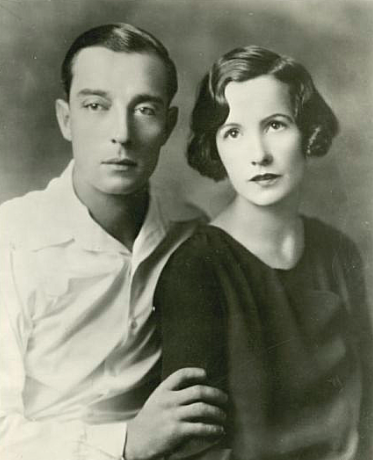
Kingsley told the story of their courtship, from meeting on a Roscoe Arbuckle set, through correspondence while Keaton served in France during World War 1, to their New York/Los Angeles long-distance engagement and wedding. The couple was obviously happy, but he had an image to maintain:
Not that you can get a word of romance out of Buster. He’d die, I suppose, rather than say anything sentimental. And he acted like somebody had caught him stealing sheep when I happened to catch him putting a little shawl around his wife’s shoulders to shield her from the draught.
She caught something you don’t get to see in Keaton biographies: Natalie Keaton’s fun side:
She looks like a little Quaker, does Natalie, and she has the sweetest expression in her eyes of any girl I have ever known. But there’s a spice of mischief, too. “Nobody else ever really had a chance for a minute,” said Natalie. “But I thought I’d keep everybody guessing a bit.”
It does take the quiet ones, doesn’t it? And just as you are looking at the shy face with an expression so demure that you expect her to say, ‘Will I meet thee at prayer hour tonight?’ she gives a smile like a ministering angel and says: ‘Let’s go for a race in my new Mercer! I can certainly make that old bus hum!”
It’s nice to see how well they started out, even knowing how sadly the marriage ended.
Keaton’s 1920’s fluffy celebrity interviews are very different from the ones he did in the 1950s and 60’s, which are collected in Buster Keaton: Interviews. After the interviewers realized that if you wanted to get him to talk, you just asked him how he and his crew solved a filmmaking problem, the articles became much more interesting. Maybe he didn’t particularly enjoy talking about himself.
Grace Kingsley, “Buster Busts into Stardom,” Los Angeles Times, May 16, 1920.
Grace Kingsley, “Now is Homey Little Wife,” Los Angeles Times, August 8, 1921.
*Joe Keaton ended up doing most of the talking that day, telling about their time in vaudeville. However, Buster did contribute an interesting idea about why Three Ages and Go West didn’t make as much money as The Navigator: “the audience was cheated out of seeing him in dire woe. His current release, Battling Butler, had plenty of “agonized misery on his behalf” and so it was sure to be a big success. (Alma Whitaker, “Buster Smiles for this Scribe,” Los Angeles Times, August 29, 1926.)
** By the time of this interview, The High Sign had already been shot in January-February 1920 and Keaton had decided to shelve it, allowing One Week to be his first solo two-reeler released in September, 1920.
Please visit the rest of the Buster Keaton Blogathon!
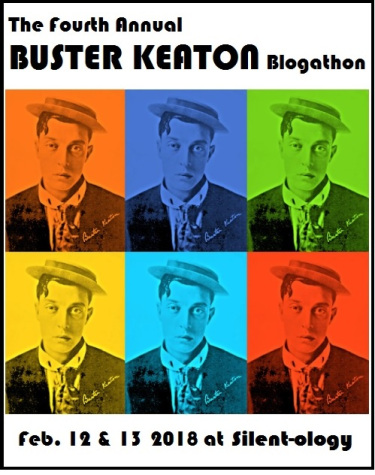







Interesting how he was reluctant to talk about himself. Apparently, his maturity in the 50s & 60s changed that😊
Again, a informative post post Lisa, thank you xx
LikeLike
Becoming more mature was probably part of it, but I suspect he liked technical questions more than personal ones. He reminds me of some engineers I know. Thanks for reading!
LikeLiked by 1 person
Interesting to read period pieces. Thanks for sharing!
LikeLiked by 1 person
Lisle!! You’ve stumbled upon gold–pure gold!! I read the Saphead interview before, of course, but have never seen more than a brief quote from that Buster and Natalie interview! The second I finished reading this I had to run over to the Newspapers site and find the whole thing. Holy cow, WHY isn’t it used as a source more often? It’s wonderful!
Reading that, combined with reading the 1924 “The Talmadge Sisters” book, is starting to flesh out a clearer portrait of Natalie for me–one decidedly different from the awful caricature she’s usually portrayed as. Thank you so much for contributing to the blogathon, this was not only a great piece but helped me in some of my own research, too!
LikeLike
Thanks Lea! I’m so glad it’s useful.
LikeLiked by 1 person
Hi Lisle. That was a wonderful essay. It was nice to see Natalie portrayed as a normal person and not a harridan. I’m glad you found the two interviews.
LikeLike
Thank you, Joe!
LikeLiked by 1 person
It’s interesting to hear that Buster would really open up when talking about over coming a technical problem on a film. I bet he had some terrific stories about filming – and I bet he would have been a fabulous mentor.
LikeLiked by 1 person
He was a great mentor! MGM hired him as a “writer” in the 1940’s, but he was mostly a problem solver on films like Red Skelton’s remakes of The General and The Cameraman. Also, clever Lucille Ball took his and Edward Sedgwick’s advice.
LikeLiked by 1 person
Thanks for the article. It’s always interesting to explore the public verses the private Keaton. The celebrity of vaudeville didn’t seem to expose as much of an entertainer’s private life to the general public, and I suppose this is what Buster was used to coming from the stage. Though his father, Joe, was a publicity machine, it doesn’t seem as if they had reporters hounding them for information. Once Buster got into movies, the culture must have undergone a change. There was a real appetite for examining the lives of film actors. The scrutiny must have been a bit anxiety-inducing for Buster.
LikeLiked by 2 people
That’s also probably why he seemed to enjoy taking to the later interviewers more. People like Brownlow were interested in his work, not his personal life. Though we did get a very sweet glimpse of his marriage to Eleanor Keaton in the interview in “The Parade’s Gone By,” when they talked about feeding the chickens and he did his chicken immitation.
LikeLiked by 1 person
Hi Lisle, I enjoyed your book on Buster Keaton’s Crew very much, especially the chapter on my distant cousin Donald Crisp. There were a couple of small errors concerning his family which you may already know of. Fantastic and interesting blog!
LikeLiked by 1 person
Thank you!
I’m so sorry I made mistakes about your family. No, I didn’t know that I had — I wish I could correct them.
LikeLiked by 1 person
No big deal – they were minor and really the chapter on Donald Crisp was very informative. He was such a raconteur! Both he and Jane Murfin would be great subjects for a full biography. Again great work on the blog and I hope Buster Keaton’s Crew is going well.
LikeLiked by 2 people
You’re absolutely right — plus there’s a lot of material available about both of them at the Academy Library and in digitized newspapers.
Thanks again!
LikeLiked by 1 person